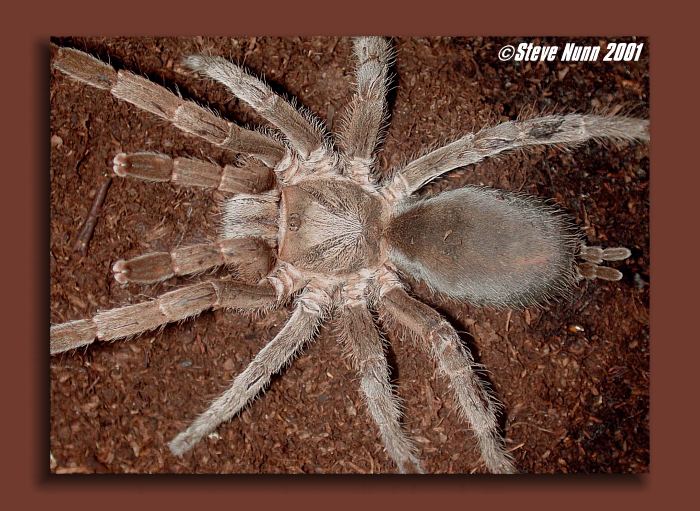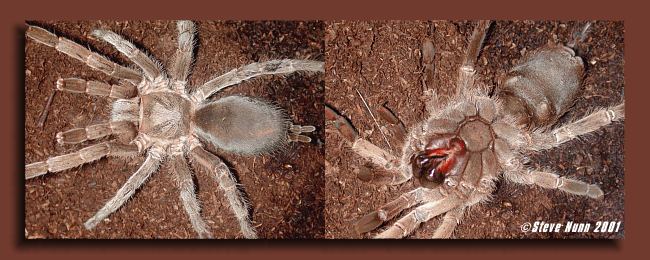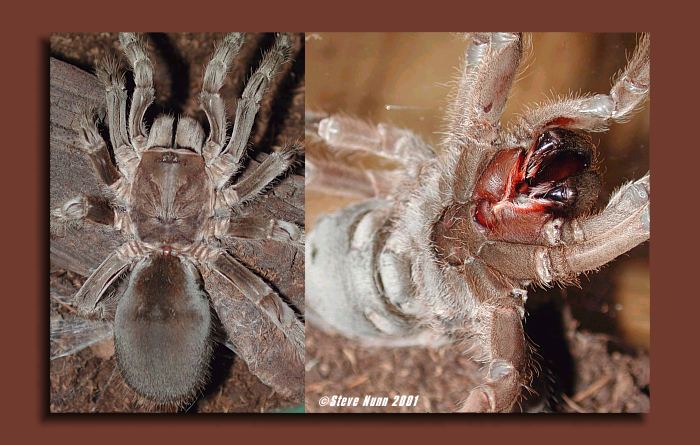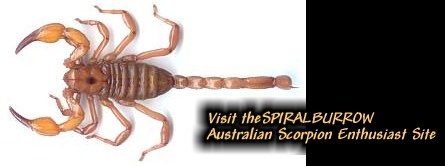

Undescribed Theraphosids
At this point it should be said that over half to three quarters of Australian Theraphosids kept in captivity are most likely undescribed species. This is interesting in itself as usually, the larger the spider, the quicker it is identified. Unfortunately for Australiaís Theraphosid enthusiasts, this is most definitely not the case. Unidentified specimens from all Aust. Genera have been found, particularly Phlogiellus, Selenotypus and Selenocosmia.
In many situations the enthusiast has kept for a time what he/she believed to be one thing, only to find out (sometimes years) later, the specimen(s) arenít even in the same genera as once thought. This situation is not helped by the varying opinions of the experts. Whilst one might include a species into a genus because of size relation tables, the other will disagree, based on a different primary classification method, such as scopula division, or stridulating organ.
Whilst this is quite frustrating to the enthusiast, it is a necessary evil in the process of scientific elimination, as the rest of Australiaís Theraphosids are gradually classified.
I`d imagine in the future seeing what is possibly the worlds most diverse tarantula, Selenocosmia stirlingi, split into several sub species, as certain colour morphs have been noticed. The genera Selenocosmia and Selenotypus will definitely increase in species count as numerous unidentified specimens have already been found.
The genus Phlogiellus will soon contain at least two described species as the Qld Museum is researching these currently. Coremiocnemis has just been located on Australian shores, soon bringing the genus count up to five.
At one stage it was believed that Australia just didnít have much diversity in the family Theraphosidae. As the years have rolled on this has been shown not to be the case, with specimens ranging from all colours and all sizes. At the moment all of our genera are from the subfamily Selenocosmiinae, but at the rate new specimens are being found, this could grow as well.

A particularly colourful undescribed species from the genus Selenocosmia.

This specimen is from the genus Selenocosmia . Although it might look similar to Selenocosmia stirlingi, it is a far smaller species that differs greatly in the shape of the carapace.

